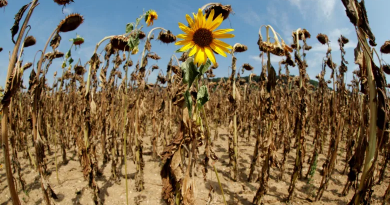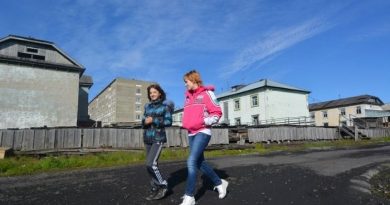Blog: Ice researchers among world’s most influential – a sign of the TIME(s)?
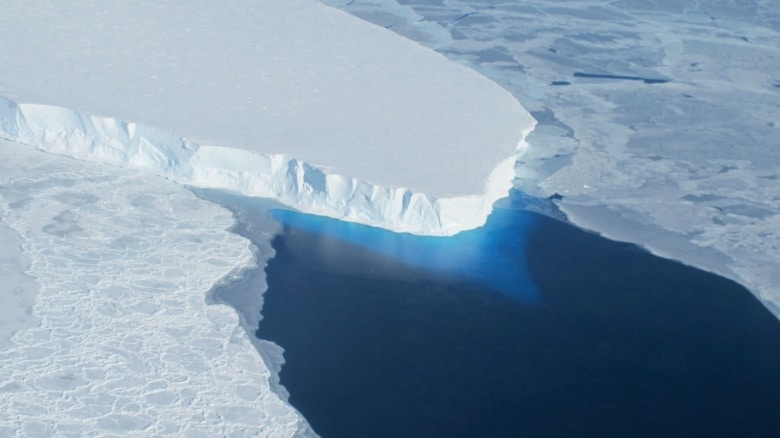
Climate change is impacting the frozen regions of our planet faster and more seriously than expected. The naming of two ice scientists as amongst the world’s most influential people shows growing recognition of the key role played by the cryosphere and the urgent need to reduce greenhouse gas emissions to protect it.
“If the ice caps melt, you won’t have anything to write about any more“. I was flabbergasted to hear that last week from someone I met locally, a self-declared environment activist. Phew. If the “ice caps melt”, finding a topic to write about will be the least of our problems. I felt slightly depressed at this lack of understanding of the workings of the planet; the failure to realise that everything is inter-related and what’s happening in the Arctic and the Antarctic affects the global climate, sea level, the food chain and concerns us all.
At a birthday gathering at the weekend though, I perked up when I noted that people were actually talking with concern about the Thwaites glacier in Antarctica. All is not lost. On the contrary, perhaps awareness of the polar regions and their key importance for all of us is on the rise. Interestingly, TIME Magazine named two Antarctic scientists Britney Schmidt (Cornell University) and Peter Davis (British Antarctic Survey) in its 2023 annual list of the 100 most influential people in the world. They were recognised for their contributions to climate science, following the publication of results from an unprecedented expedition to measure melting under the Thwaites Glacier in West Antarctica.
We’re so proud that BAS oceanographer Dr Peter Davis and planetary scientist Dr Britney Schmidt are in the #TIME100❤️
In February, they shared results from the first ever expedition to measure melting under the Thwaites Glacier in Antarctica.
👉 https://t.co/5xiCPoBKgo pic.twitter.com/yVrySTwz4X
— British Antarctic Survey (@BAS_News) April 13, 2023
Under the ‘Doomsday‘ ‘glacier
The TIME “influencers”, polar oceanographer Davis and planetary scientist Schmidt, were the lead authors of papers analysing the first measurements ever taken from the “grounding zone” under the Thwaites Glacier, that is where it meets the ocean and becomes an ice shelf. Thwaites, sometimes dubbed the „Doomsday Glacier“, is a particularly important part of the Antarctic Ice Sheet because it holds enough ice to raise global sea levels by around 60 cm and is considered by many to be at risk of rapid retreat, threatening coastal communities around the world.
As part of the US-UK International Thwaites Glacier Collaboration, a team of scientists and engineers created a 600 metre deep borehole 2 kilometres from the Thwaites Glacier grounding line. They then put sensors including a slim undersea autonomous robot through the hole to survey the hitherto virtually inaccessible area. Data from the robot ‘Icefin’ revealed the base of the ice shelf is covered in crevasses and stair-like patterns, which are melting in some places nearly 10 times faster than previously modelled. As water funnels through these irregular shapes, the heat can be transferred into the ice more rapidly, widening the crevasses and rifts further.
They found that although the ocean was very warm and salty, the melt rate was less than modelled across the ice sheet.
However, data from @IcefinRobot showed crevasses and terraces in the ice shelf, which are melting more rapidly – in some places nearly 10 times faster. pic.twitter.com/6WFo3SSHo8
— British Antarctic Survey (@BAS_News) April 13, 2023
Antarctica is closer than you think
“These new views show us how change is happening under the ice, revealing complex and intricate systems that are responding to climate change and driving sea level rise“, Schmidt explained.
“ANTARCTICA MAY FEEL DISTANT AND RUGGED, BUT THE TRUTH IS THAT IT IS INCREDIBLY VULNERABLE, AND THAT CHANGES THERE AFFECT EVERY ONE OF US. UNDERSTANDING HOW THE PLANET RESPONDS TO OUR ACTIONS IS CRITICAL FOR STEMMING THE TIDE OF CLIMATE CHANGE.”
There we have it. As Davis commented:
“OUR RESEARCH SHOWED THAT IT DOESN’T TAKE MUCH TO PUSH A HUGE ANTARCTIC GLACIER OUT OF EQUILIBRILUM – AND THAT HAS REAL CONSEQUENCES FOR ALL OF US, NO MATTER WHERE WE LIVE ON THIS PLANET.”
Ted Scambos, a senior research scientist at the Cooperative Institute for Research in Environmental Sciences (CIRES), puts it like this: “If Thwaites were to collapse, it would drag most of West Antarctica’s ice with it, so it’s critical to get a clearer picture of how the glacier will behave over the next 100 years. “
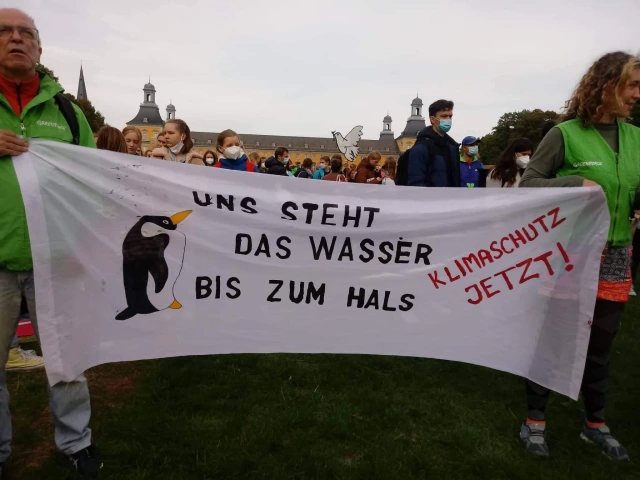
That was just one of an increasing number of scientific publications recently indicating that even the Antarctic, that far southern bastion of cold, is increasingly being affected by climate change, and that those changes are happening earlier and faster than predicted. The International Cryosphere Climate Initiative (ICCI), which publishes an annual State of the Cryosphere Report, stresses that the latest IPCC Synthesis Report published in March is based to a large extent on the IPCC’S Special Report on Oceans and Cryosphere which was published back in 2019 and another report released in 2021. That means this latest summary of climate science does not include papers relating to our ice- and snow-covered regions published after those dates, although research and observations continue to evolve exceedingly quickly. The next IPCC Report will only be published around 2030.
Forget the 2°C goal – 1.8°C is the absolute limit
A study published in Nature Communications in February by an international team of scientists led by Jun-Young Park from the IBS Center for Climate Physics and Pusan National University, Busan, South Korea, shows that an irreversible loss of the West Antarctic and Greenland ice sheets, and a corresponding rapid acceleration of sea level rise, may be imminent if global temperature change cannot be stabilized below 1.8°C, relative to preindustrial levels.
A study published in Nature Communications shows that an irreversible loss of the ice sheets, and a corresponding acceleration of sea level rise, may be imminent if global temperature cannot be stabilized below 1.8℃.https://t.co/MEMZCREpnO pic.twitter.com/3GHoNluPYX
— IBS_media(기초과학연구원) (@IBS_media) February 17, 2023
Given that we are currently on a trajectory to at least 2.4°C, this is scary stuff.
The climate model projections presented in the latest IPCC report do not agree on how quickly the major ice sheets will respond to global warming, the authors note. Melting ice sheets are potentially the largest contributor to sea level change, and historically the hardest to predict because the physics governing their behavior is so complex.
says Park.
The team of climate researchers used a new computer model, “which captures for the first time the coupling between ice sheets, icebergs, ocean and atmosphere“. They conclude that “an ice sheet/sea level run-away effect can be prevented only if the world reaches net zero carbon emissions before 2060.“
Professor Axel Timmermann, Director of the IBS Center for Climate Physics and a co-author of the study says if we miss this emissions goal, the ice sheets will disintegrate and melt at an accelerated pace:
„If we don’t take any action, retreating ice sheets would continue to increase sea level by at least 100 cm within the next 130 years. This would be on top of other contributions, such as the thermal expansion of ocean water,” says Timmermann. Not a happy prospect.
Ice sheets respond to higher temperatures in the atmosphere and the ocean in delayed and often unpredictable ways. The scientists’ supercomputer simulations indicate that sea ice and atmospheric circulation changes around Antarctica play a crucial role in controlling the amount of ice sheet melting with repercussions for global sea level projections.
“One of the key challenges in simulating ice sheets is that even small-scale processes can play a crucial role in the large-scale response of an ice sheet and for the corresponding sea-level projections. Not only do we have to include the coupling of all components, as we did in our current study, but we also need to simulate the dynamics at the highest possible spatial resolution using some of the fastest supercomputers,” says Timmermann.
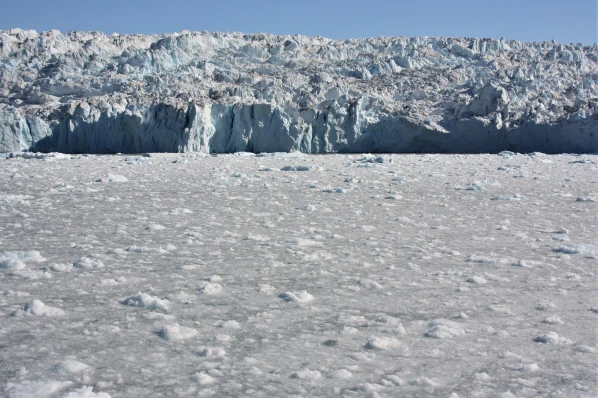
Antarctic sea ice at a record low
Arctic sea ice has been declining steadily in area and in thickness since the middle of the 20th century. Antarctic sea ice cover, on the other hand, was actually expanding slightly until a decade ago. Then from 2014 to 2017, the ice began to vanish rapidly, losing more in 3 years than the Arctic had lost in 3 decades, says Claire Parkinson, a climatologist at NASA’s Goddard Space Flight Center: “It was just astonishing.” The ice rebounded for a few years, then resumed its downturn, reaching record lows last year and again this year. A long-term decline may have set in, and it could have unexpected and ominous domino effects, according to several recent studies, summarized by Paul Voosen in Science.
(4 of 5) The #Antarctic had the 2nd-smallest #SeaIce coverage on record for the month of #March & averaged 1.08 million sq. miles — 490,000 sq. miles below avg.https://t.co/CGL5QmpQv2 @NOAANCEI #StateOfClimate pic.twitter.com/y7rl8pQzsp
— NOAA (@NOAA) April 13, 2023
A study published in Geophysical Research Letters in March 2023 by a team headed by Felipe Gómez-Valdivia, a physical oceanographer with British Antarctic Survey, indicates that dwindling sea ice may speed up the melting of Antarctic glaciers. The scientists use a climate model to analyze ocean changes around West Antarctica. In these waters, a large system of circular ocean currents fed by warm currents from farther north spins beneath the sea ice. It is known as the Ross Gyre and is 1000 kilometers wide. The team found that as sea ice thinned, the force of surface winds on newly exposed water strengthened the gyre and expanded it. This brought warm water closer to the glaciers of West Antarctica. As they spread into the ocean as ice shelves, they are vulnerable to melting from below.
Dwindling sea ice could strengthen a whirling current called the Ross Gyre, bringing warm waters closer to land and hastening the collapse of the West Antarctic ice sheet. https://t.co/A3hQogMO9T
— News from Science (@NewsfromScience) April 14, 2023
Within 30 years of its expansion, the gyre could warm the waters beneath the glaciers by 1°C, Valdivia says—an unprecedented heat wave that would accelerate erosion of the ice. As soon as the sea ice started to decline in the model, the expansion occurred, the team says. Even in scenarios where greenhouse emissions dropped and climate warming slowed, the gyre continued to expand. Alarming? As Robert Larter, a marine geophysicist with BAS, puts it in Science:
“IT’S KIND OF OUT OF CONTROL NOW BECAUSE OF WHAT HUMANS HAVE ALREADY DONE“.
The warming-induced sea ice decline would strongly influence the future stability of the West Antarctic Ice Sheet. This could have an important influence on the sea-level rise caused by this region, with global impacts.
Ocean circulation in a whirl
“Torrents of Antarctic meltwater are slowing the currents that drive our vital ocean overturning’ – and threaten its collapse “. That was the message from a study published in Nature , by Qian Li of MIT, Matthew England of the Australian Centre for Excellence in Antarctic Science (ACEAS), UNSW Sydney and colleagues.
In an article for The Conversation, they explain how the increased influx of freshwater from melting glaciers is slowing down the “overturning” circulation – a network of strong currents spanning the world’s oceans. The overturning circulation carries heat, carbon, oxygen and nutrients around the globe, and fundamentally influences climate, sea level and the productivity of marine ecosystems.
“There are worrying signs these currents are slowing down. They may even collapse”, the authors explain. “If this happens, it would deprive the deep ocean of oxygen, limit the return of nutrients back to the sea surface, and potentially cause further melt back of ice as water near the ice shelves warms in response. There would be major global ramifications for ocean ecosystems, climate, and sea-level rise”.
The team uses new ocean model projections to look at changes in the deep ocean to the year 2050 – so not that far into the future:
“Our projections show a slowing of the Antarctic overturning circulation and deep ocean warming over the next few decades. Physical measurements confirm these changes are already well underway”, they find. Climate change is clearly responsible:
„As Antarctica melts, more freshwater flows into the oceans. This disrupts the sinking of cold, salty, oxygen-rich water to the bottom of the ocean. From there this water normally spreads northwards to ventilate the far reaches of the deep Indian, Pacific and Atlantic Oceans. But that could all come to an end soon. In our lifetimes.“
🧵 New research released on March 29 showed that meltwater will slow down Antarctic overturning circulation, with a potential collapse this century.
For many people, this news was both alarming and difficult to understand.
So what does this mean, and why does it matter? pic.twitter.com/1JhycYQ2xd
— Nina Gallo 🇦🇺 🇦🇶 🇪🇺 (@NinaBGallo) April 11, 2023
East Antarctica ice loss in just 200 years
A study published in Nature Communications at the beginning of April underscores the increased risk of higher sea-level rise through increased contributions from melting of East Antarctica even under more “moderate” IPCC emissions scenarios. James R. Jordan, Chris Stokes and colleagues find that “increased warm water upwelling along the edges of the East Antarctic Ice Sheet (EAIS) has the potential to increase ice loss and resulting sea-level rise from the EAIS over the next 200 years, especially in the most vulnerable sections of the ice sheet.”
In addition to a general warming of the atmosphere and ocean, global heating could warm the water mass in contact with Antarctic ice shelves. This could mean the amount of ice lost in both medium- and high-emissions scenarios increases fourfold.
The authors do not believe intrusion by these warm deep waters would occur across the entirety of East Antarctica (in the worst-case scenario), but “the possibility of increased warm water contact (particularly in areas of high risk, such as George V Land) may cause a larger contribution to sea level rise from East Antarctica over the next couple of hundred years, even with medium emissions scenarios.”
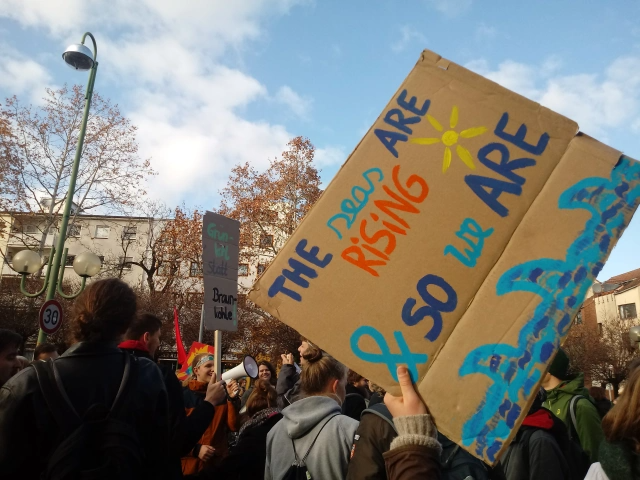
Study of the past a stark warning for today
As if all these findings weren’t enough, scientists studying climate changes in the past have found that ice sheets can collapse much faster than we thought. Their study, published in Nature in early April, looked into the great ice sheet which once covered Scandinavia, based on sea floor sediment formations from the last ice age. The authors found that when it collapsed about 19,000 years ago, it did so at rates up to 600 meters per day; far faster than anything measured by satellite data over the past 50 years. Indeed the slowest rate of collapse of this ice sheet, (recorded in daily detail in the seabed sediment pressed down by the ice sheet off today’s Norwegian coast), was 50 meters per day, nearly double that of the fastest observed to-date in the satellite record (for Pope Glacier, West Antarctica, at 30 meters/day).
Coming back to the Thwaites Glacier discussed earlier, the scientists note similar conditions that might allow an equally fast rate of collapse.
We can still act
So where does all this leave us? The latest IPCC report tells us it is not too late to prevent dangerous thresholds from being crossed. But the time scale is shifting. The changes are happening ever faster. That means the upper limit for climate warming, the temperature threshold we must not cross is proving to be much lower than we thought – and the world is already approaching what the ice and snow experts from ICCI describe as the “1.5°C/2°C guardrails” set by the Paris Agreement.
Levels of carbon dioxide (CO2), methane and nitrous oxide continued to grow in the atmosphere during 2022, according to WMO’s Member @NOAA.
We need urgent #ClimateAction against record levels of greenhouse gases are driving #climatechange.
🔗https://t.co/JUNXygNwrx pic.twitter.com/S9gT1xIixx— World Meteorological Organization (@WMO) April 11, 2023
According to the World Meteorological Organisation (WMO) the chance of global near-surface temperature exceeding 1.5°C above preindustrial levels at least one year between 2022 and 2026 is around fifty-fifty. Even if the overshoot is only temporary, it could trigger disastrous ice melt events. In its summary of the latest IPCC Synthesis Report, ICCI writes: “Earth’s cryosphere responds to each fraction of warming above 1.5°C with devastating consequences, even if temperatures are lowered again. The choices made within the next few years will determine the amount of cryosphere remaining on our planet and therefore, the future of generations to come.”
All the evidence tell us we have to cut emissions drastically between now and 2030 and keep global temperatures within the 1.5°C limit to avoid substantial ice loss, especially from the East Antarctic Ice Sheet. The “sleeping ice giant” contains 52 meters of sea level rise.
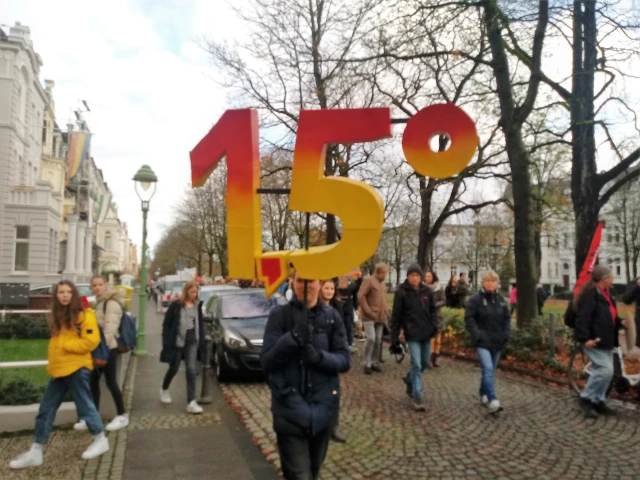
Time for increased ambition
At last year’s UN climate conference COP27 in Sharm El-Sheikh, Egypt, a broad coalition of 20 governments — led by the two polar and mountain nations of Chile and Iceland — joined together to create a new high-level group ‘Ambition on Melting Ice: On Sea-level Rise and Mountain Water Resources’. The “AMI” group aims to spread awareness of the impact of losing snow and ice regions, and includes “not only polar and mountain nations but also low-lying nations that in reality, exist on the front lines of cryosphere changes today”.
In its Declaration the group writes: “Rapid and emergency-scale decreases in global CO2 and other greenhouse gas emissions, across all sectors, to keep alive the possibility of limiting global warming to 1.5°C, is our best option to slow progressive cryosphere loss and the resulting widespread global catastrophes. Such decreased emissions, of 50% by 2030 from 2019 levels, with carbon-neutral investments and economic development, will provide a better human and environmental future, with improvements from low emissions seen by the time today’s children reach middle age.”
The alternative, AMI concludes, is a “clear existential threat to human civilization that none of us wish to leave as our generation’s planetary legacy.“
Today, Iceland and Chile launch “Ambition on Melting Ice” with at least 16 other countries. The initiative aims to protect Earth’s frozen regions through vigorous climate action.
Join us for our launch event:
⏰ 13:00 Egypt (GMT+2)
📍COP27, Meeting Room 3#COP27 #cop27egypt pic.twitter.com/1CRsItVn4Y— International Cryosphere Climate Initiative (@iccinet) November 16, 2022
The influential scientists
We need to keep pushing for those “rapid and emergency scale” emissions cuts. Policymakers have to listen to scientists. And each of us has a contribution to make. In addition to conscious everyday lifestyle choices, all of us living democratic societies have the power to influence climate change by voting for the ones who will do most. Consumer pressure and political choices, public protest – can all help to hold the world to 1.5°C.
The most dangerous course of action would be say we won’t make it anyway and settle for 2°C. Two degrees is way too high.
Let’s come back to that TIME list of the 100 most influential people. It also includes Johan Rockström, Director of the Potsdam Institute for Climate Impact Research. His work is described as “crucial to understanding the interconnected crises facing our planet and is shaping the path forward, guiding leaders on how to turn complex science into clear, quantifiable actions.”
That is the way we have to go. I’ll give the last word to his fellow “influencer” Peter Davis:
„It’s not too late to do good: there’s still time to make a difference by cutting carbon emissions and moving to a greener economy. We’re honoured that our work has been included in the TIME100, and I hope this is a sign of the appetite of the global community to take action.”
Maybe “the times are a changin’.” Now we have to speed up the momentum.
Related stories from around the North:
Canada: Climate change affecting composition of forests in Yukon, Canada, study finds, CBC News
Greenland: COP27— Indigenous knowledge must be included in policy making say Inuit leaders, Eye on the Arctic
Norway: Norway ups climate ambitions…and boosts its fossil fuels, The Independent Barents Observer
Russia: Russian Arctic coal is looking for way out of sanctions, The Independent Barents Observer
Sweden: Will the green transition be the new economic motor in the Arctic?, Eye on the Arctic

